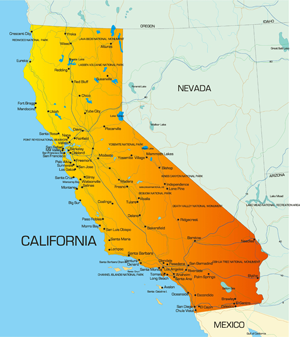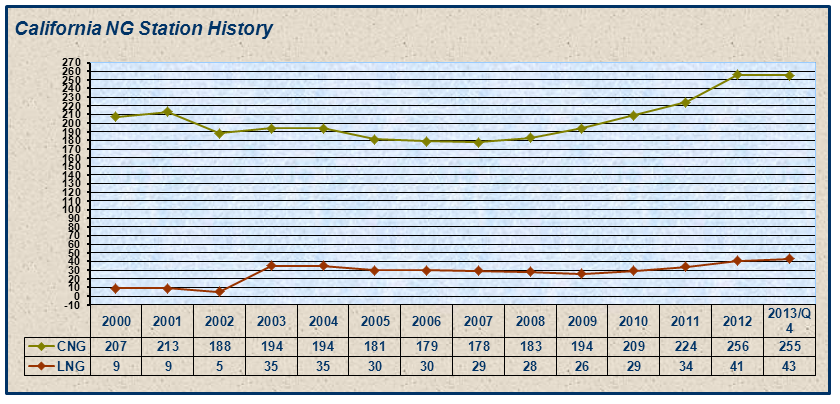A portal website bringing together vital information about natural gas and natural gas vehicles.
 | California has fairly extensive incentives for owners of alternative vehicles, and for the research and development of AFV technologies, home fueling (south coast), transportation and school bus use. Natural gas is included in all current definitions of alternative fuels. The state has extensive requirements for AFV use in government fleets. The state has a sticker requirement for AFVs which is $36 annually for vehicles under 4,000 pounds.
|

| Legislative Session Dates: | January 6 - November 30 |
| Legislature Website: | http://www.legislature.ca.gov/ |
| Unladen Weight | Fee |
|---|---|
| All passenger cars and other vehicles 4,000 pounds (lbs.) or less | $36 |
| More than 4,000 lbs. but less than 8,001 lbs. | $72 |
| More than 8,000 lbs. but less than 12,001 lbs. | $120 |
| 12,001 lbs. or more | $168 |
This state was last examined and updated in October, 2016.
